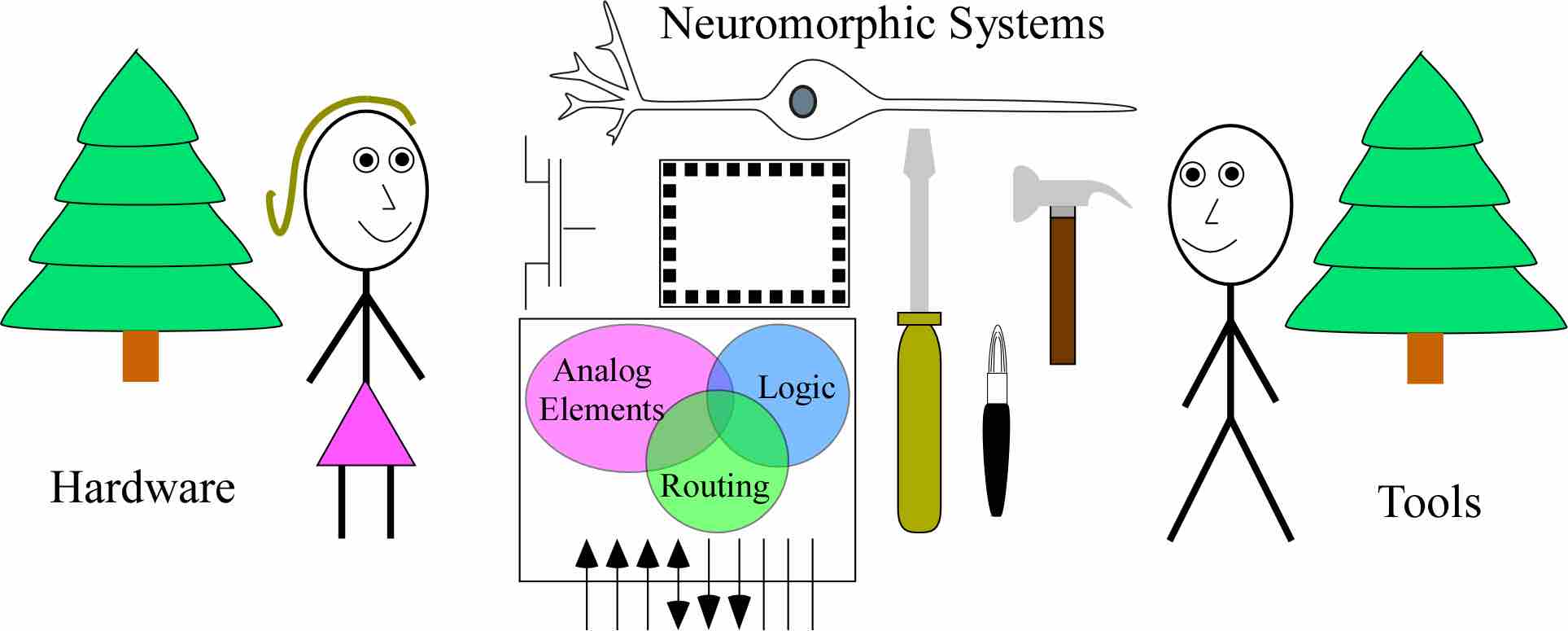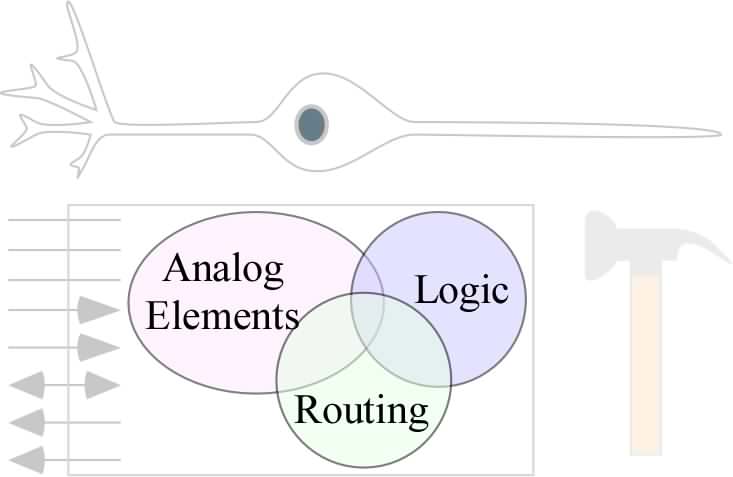|
Jennifer Hasler
|
Bernhard Vogginger
|
Terry Stewart
| |
Georgia Institute of Technology
|
Technical University Dresden
|
University of Waterloo
|
This topic integrates analog circuit design and analog computing
and high-level tools to enable many designers
towards building neuromorphic engineering systems.

| |
Our goal is to build an analog neuromorphic hardware community fully
immersed in developing the tools and infrastructure needed to develop
mature analog neuromorphic systems.
|
This track intends to make as many items possible in a remote fashion.
Although some items physically at Telluride will be challenging to have
a remote presence,
we will try to make as many opportunities as possible.
This page will focus on the analog and tools workshop aspects.
The spinnaker tools and schedule are on another site.
|
|
Summary:
This topic area
builds an analog neuromorphic hardware community
fully immersed in developing
the tools and infrastructure needed to develop mature analog neuromorphic systems.
High-level tools
enable
low-level principles of analog design
towards neuromorphic system design.
New tool development,
as well as new hardware development,
supports large-scale analog iand neuromorphic systems.
Tools are essential for a wide user base to use neuromorphic hardware
(e.g. Spinnaker)
that is often programmable
(e.g. FG devices)
as well as configurable
(e.g. large-scale Field Programmable Analog Arrays (FPAA) )
for their particular application.
|
|
Neuromorphic Hardware / Software Platforms:
- FPAA Boards with remote interfacing:
The USB-interfaced FPAA boards will be utilized as a general framework
to create individual circuit designs,
as well as getting a vision of the capability
and realistic viewpoint of working with current neuromorphic hardware.
- Spinnaker and Spinnaker 2 Boards
- Nengo and Nengo-Braindrop
- Braindrop boards (??)
|
FG = Floating-Gate, as in FG Devices, FG Circuits, FG Systems
FPAA = large-scale Field Programmable Analog Arrays, as in SoC FPAA
Workshop Summary :
We will have multiple sessions to teach hardware interfacing (e.g. FPAA devices),
as well as teaching sessions to understand core tool concepts,
as well as fundamental circuit concepts.
- Week 0 (June 20-24) Virtual Discussions
-
Week 1 (June 27-July 1) Overview Discussion(s)
(e.g.
J. Hasler,
"Neuromorphic Hardware and Tools"
)
- Week 2 (July 5-July 8)
- Week 3 (July 11-July 13)
Discussion
sessions
during Virtual Telluride three weeks
|
|
Track Lectures:
- Underlying theory of analog design through the neuromorphic design history.
- Tools enabling design applied towards the design, synthesis, and verification
of neuromorphic systems
- Interactive (mostly virtual) sessions
enabling
hand-on work with existing analog
systems, via
remote access to FPAAs and Braindrop,
low-level access and high-level programming (e.g. Nengo to program Braindrop),
as well as access to simulating these analog systems.
|
Potential Projects
Projects:
apply analog circuit and systems to solve neuromorphic application problems.
Some projects
emphasize on function approximation / classification,
such as command-word / keyword spotting.
Other projects further develop the existing tools to better
support these particular applications.

|
- Text classification using FPAA / Braindrop / SPICE simulation
- Characterizing the space of functions that can be well-approximated with different hardware (and how adjusting that hardware would affect that space of functions)
- Expanding an analog standard cell library
- Developing higher level abstraction tools for neuromorphic hardware programming
(e.g. FPAA, Braindrop)
|
Videos and Reading on Hardware, Tools, and Neuromorphic Design
Neuromorphic Overview and Roadmap
IEEE
Spectrum (2017),
Neuromorphic Comp (2013).
Physical
Computing
(Analog, Neurmo, Optical, and Quantum Computing).
FPAA Devices, Systems, and Tools
Short videos:
-
FPAA
History, Dev, Classification, and Directions
-
Historical
perspective on FG for Neuro Eng:
- FPAA Enabling Physical
Computing
- Open-Source FPAA
tools
- Potential FPAA Capabilities:
- Starting point on analog standard-cell
libraries
FPAA Workshop
material
FPAA Tool Download :
Ubuntu VM
Core Reading Material
-
FPAA Overview
(IEEE Proceedings 2020).
- Opportunities
for Scaled FPAAs & Flexibility vs. Cost:
Journal(2022),
Invited CICC(2022)
-
Open-source FPAA tool
overview
(WOSET 2020).
-
First System on Chip (SoC) FPAA
IC
(TVLSI 2016).
- On-chip VMM+WTA learning
classifier
(ECAS 2018).
- FPAA Remote
System
(JPLEA 2016)
- Additional
resources
|
Introduction to Analog IC Design
Skywater 130nm
tools
used in GT IC design class.
Neuromorphic Design using Nengo
|
|